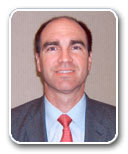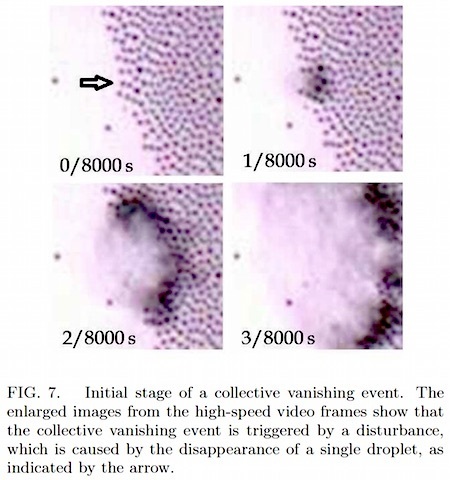Marc Abrahams's Blog, page 353
January 8, 2015
The Specter of the Specter of Internet Pornography
The dire, horrible, brain-damaging effects of pornography may not exactly exist, suggests this study of a study that insists that yes, those effects do exist. The studies are:
“Neuroscience research fails to support claims that excessive pornography consumption causes brain damage,” Rory C. Reid, Bruce N. Carpenter, and Timothy W. Fong, Surgical Neurology International, 2011; 2: 64. The authors, at University of California, Los Angeles, and Brigham Young University, explain:
“In their editorial on excessive pornography use, Hilton and Watts [see the citation, below] offer some interesting neuroscience perspectives on their conceptualization of pornography problems as an addictive disorder. They highlight several parallels between dysregulated pornography consumption and other maladaptive behaviors, some of which are viewed as addictions. Although we believe these parallels are worthy of scientific inquiry, Hilton and Watts offered little, if any, convincing evidence to support their perspectives. Instead, excessive liberties and misleading interpretations of neuroscience research are used to assert that excessive pornography consumption causes brain damage. We wish to clarify what the research actually does suggest.”
 “Pornography addiction: A neuroscience perspective,” Donald L. Hilton, Jr [pictured here] and Clark Watts, Surgical Neurology International, 2011;2:19. The authors are affiliated with the University of Texas Health Science Center at San Antonio, and the University of Texas School of Law in Austin.
“Pornography addiction: A neuroscience perspective,” Donald L. Hilton, Jr [pictured here] and Clark Watts, Surgical Neurology International, 2011;2:19. The authors are affiliated with the University of Texas Health Science Center at San Antonio, and the University of Texas School of Law in Austin.
Dr. Hilton earlier wrote a metaphor-packed expose called “Slave Master How Pornography Drugs & Changes Your Brain“, which was unleashed educationally on the readers, if there are any, of Salvo magazine. That same issue of Salvo includes a salvo about a porn star, attributed to the often-excited Dr. Judith Reisman, whose work we have appreciated time and again.
(Thanks to Ig Nobel Prize winner Dan Ariely for bringing this to our attention.)
BONUS: Video of the often-excited Dr. Judith Reisman in conversation with her admirer, Reverend Jerry Falwell:
January 7, 2015
Explosive Lemming Outbreaks in Fennoscandia
 An outbreak of lemmings is not something you’ll see every year. The last major one was 2006 to 2007 – the first time in two decades. The causes of, and mechanisms behind, such population surges are, to this day, intriguing naturalists (and physicists, and mathematicians). But some progress towards understanding the outbreaks is, however, being made. A team from the Department of Arctic and Marine Biology, University of Tromsø, Norway, had the good fortune to be carrying out a spatially extensive seasonal lemming-monitoring survey in northern Fennoscandia when there was an explosion (of lemmings). See;’Determinants of lemming outbreaks’ by Rolf A. Ims, Nigel G. Yoccoz, and Siw T. Killengreen, Proceedings of the National Academy of Sciences of the Untied States of America (PNAS), February 1, 2011 vol. 108 no. 5
An outbreak of lemmings is not something you’ll see every year. The last major one was 2006 to 2007 – the first time in two decades. The causes of, and mechanisms behind, such population surges are, to this day, intriguing naturalists (and physicists, and mathematicians). But some progress towards understanding the outbreaks is, however, being made. A team from the Department of Arctic and Marine Biology, University of Tromsø, Norway, had the good fortune to be carrying out a spatially extensive seasonal lemming-monitoring survey in northern Fennoscandia when there was an explosion (of lemmings). See;’Determinants of lemming outbreaks’ by Rolf A. Ims, Nigel G. Yoccoz, and Siw T. Killengreen, Proceedings of the National Academy of Sciences of the Untied States of America (PNAS), February 1, 2011 vol. 108 no. 5
“Our spatially extensive seasonal monitoring, which happened to encompass the now rare event of a proper lemming outbreak in northern Fennoscandia, allowed us to provide a detailed comparison of the topology of the lemming outbreak with the simultaneous dynamics of the gray-sided vole. In accordance with previous studies the lemming exhibited a steeper increase phase than that of the vole. However, the previous studies based their analysis of population growth rates taken at an annual time scale (fall to fall); i.e., the population dynamics were not separated into seasonal components. In contrast, we analyzed growth rates for summers (spring to fall) and winters (fall to spring) separately and thereby can provide unique insights into the basis for the lemming–vole dichotomy.”
The open-access paper, with maps and graphs, can be read in full here:
Note: Rumours regarding the death of lemmings (by unassisted suicide) appear to have been greatly exaggerated. Here’s a snippet from Wikipedia citing the 1958 Disney film White Wilderness :
“[…] in which staged footage was shown with lemmings jumping into certain death after faked scenes of mass migration. A Canadian Broadcasting Corporation documentary, Cruel Camera, found the lemmings used for White Wilderness were flown from Hudson Bay to Calgary, Alberta, Canada, where they did not jump off the cliff, but were in fact launched off the cliff using a turntable.”
More detail here:
January 6, 2015
Cup-of-coffee micro-droplets surface physics, poetically
Investigator Mason Porter sent us this note, about a study he noticed:
The thing that strikes me about this paper is the first sentences of the abstract — just about the most poetic initial sentence that I have ever seen in an abstract of a scientific paper. So one thing that could be interesting (to me, at least) would be what other papers out there in the ether have similarly compelling or poetic initial sentences? The subject of fluid mechanics isn’t typically my cup of tea (er, coffee). [I had to get that in there.]
The study is: “Dynamics of microdroplets over the surface of hot water,” Takahiro Umeki, Masahiko Ohata, Hiizu Nakanishi, Masatoshi Ichikawa, arXiv:1501.00523, epub January 3, 2015. The authors, at Kyoto University and Kyushu University, Japan, report
When drinking a cup of coffee under the morning sunshine, you may notice white membranes of steam floating on the surface of the hot water. They stay notably close to the surface and appear to almost stick to it. Although the membranes whiffle because of the air flow of rising steam, peculiarly fast splitting events occasionally occur. They resemble cracking to open slits approximately 1 mm wide in the membranes, and leave curious patterns. We studied this phenomenon using a microscope with a high-speed video camera and found intriguing details: i) the white membranes consist of fairly monodispersed small droplets of the order of 10 μm; ii) they levitate above the water surface by 10∼100 μm; iii) the splitting events are a collective disappearance of the droplets, which propagates as a wave front of the surface wave with a speed of 1∼2 m/s; and iv) these events are triggered by a surface disturbance, which results from the disappearance of a single droplet.
Here’s further detail from the study:

January 5, 2015
He studies scientific crackpottery
Some scientists study curiosities in their fellow scientists, as well as curiosities in the rest of nature. Laura Gardner studied Chris Miller, a professor of biochemistry at Brandeis University who studies all sorts of things. Miller delights in studying several, apparently related, sorts of scientist. Writing in Brandeis magazine, Gardner’s profile of Miller appears under the headline “An Epistemology of Scientific Crackpottery“. Here’s a small chunk of it:
Miller spends most of his time studying the structure and function of ion channels, membrane proteins involved in electrical signaling. However, a secondary interest was born when, as a doctoral student, he worked in the lab of an accomplished scientist he ultimately realized was a classic crackpot. Since then, Miller has developed what he calls an “epistemology of scientific crackpottery.”
An epistemology, he explains, “is a system of knowing how we know what we think we know.” He says his is designed to “distinguish the brilliant, creative, contrarian heroes of science, who move their fields forward, from the crackpots, who are also brilliant, creative contrarians.”
Miller’s epistemology proposes four scientific-outlier phenotypes: con men (and they do seem to be all men), like Hwang; mountebanks, more akin to snake-oil salesmen than working scientists; and two types of scientific heretics — heroes and crackpots.
Heretic-heroes interest Miller the most…
(Thanks to investigator Ivan Oransky for bringing this to our attention.)
BONUS: The most renowned scholar of crack pottery was the apocryphal Professor Josiah Carberry of Brown University. Professor Carberry specialized in psychoceramics (the study of cracked pots).
Primary Gushing of Beer – a Curative Method
“Gushing is the vigorous overfoaming of carbonated beverages when the bottle is opened.”
Don’t you just hate it when that happens? But (other than too much priming sugar as in the example above) why does it happen, and what can be done about it? Answers can be found in a 2014 paper in the Journal of the American Society of Brewing Chemists (vol:72 issue:1 pp:12-21) entitled: ‘A Curative Method for Primary Gushing of Beer and Carbonated Beverages: Characterization and Application of Antifoam Based on Hop Oils.’ It’s authored by Zahra Shokribousjein (1), KULeuven, Department of Microbial and Molecular Systems (M2S), and Leuven Food Science and Nutrition Research Centre (LFoRCe-MaltBeerSci), Heverlee, Belgium; An Philippaerts, KULeuven, Centre for Surface Chemistry and Catalysis, Heverlee, Belgium; David Riveros, KULeuven, M2S, and LFoRCe-MaltBeerSci; Jean Titze, National University of Ireland, University College of Cork, School of Food and Nutritional Sciences, College Road, Cork, Ireland; Yannick Ford, Barth Innovations Ltd., Hop Pocket Lane, Paddock Wood, Kent, TN12 6DQ, United Kingdom; Sylvie M. Deckers, Mohammadreza Khalesi, Jan A. Delcour, Kurt Gebruers, and Hubert Verachtert, KULeuven, M2S, and LFoRCe-MaltBeerSci; Vladimir Ilberg, Research Center Weihenstephan for Brewing and Food Quality, Technical University of Munich, Alte Akademie 3, 85354 Freising-Weihenstephan, Germany; Guy Derdelinckx, KULeuven, M2S, and LFoRCe-MaltBeerSci; and Bert Sels, KULeuven, Centre for Surface Chemistry and Catalysis, Heverlee, Belgium.
“Primary gushing in beer is mostly caused by a group of proteins called hydrophobins secreted by filamentous fungi, which contaminate CO(2) gaseous molecules during carbonation and form nanobubbles. The influence of hop oil antifoam on primary gushing showed a complete suppressing effect in sparkling water, a decreasing effect in wort, and no influence on gushing-positive beers…. Because hop antifoam molecules are hydrophobic, they interact with hydrophobins and prevent interaction with CO(2) and, consequently, inhibit the possibilities of development of the explosive nanobubble structure.”
Also see: Beer bubble appreciation in Limerick and/or The effect of beer foam on resisting beer spills and/or Further on the physics of froth.
January 4, 2015
Songs for psychiatrists: The Ballad of Sigmund Freud
For your psychiatric listening pleasure or disturbance, the Chad Mitchell Trio performs “The Ballad of Sigmund Freud”:
Here’s a picture of Sigmund Freud, equipped with a cigar and a beard:
BONUS (possibly related): The group performs the song “O, You can’t Chop Your Mother Up in Massachusetts”, at the Lizzie Borden Museum (in Massachusetts):
January 3, 2015
Is coffee-drinking good for you? How to say “It’s complicated” in 192 words.
Scientists continue to struggle, or at least write, on the question: Is coffee-drinking good or bad for a person’s health?
One scientist found a new way to say — using only 192 words — “It’s complicated”.
That summary appears in the study: “Toward systems epidemiology of coffee and health,” Marilyn C. Cornelis, vol. 26, no. 1, Current Opinions in Lipidology, February 2015, pp. 20-29. The author presents this 192-word abstract:
PURPOSE OF REVIEW: Coffee is one of the most widely consumed beverages in the world and has been associated with many health conditions. This review examines the limitations of the classic epidemiological approach to studies of coffee and health, and describes the progress in systems epidemiology of coffee and its correlated constituent, caffeine. Implications and applications of this growing body of knowledge are also discussed.
RECENT FINDINGS: Population-based metabolomic studies of coffee replicate coffee-metabolite correlations observed in clinical settings but have also identified novel metabolites of coffee response, such as specific sphingomyelin derivatives and acylcarnitines. Genome-wide analyses of self-reported coffee and caffeine intake and serum levels of caffeine support an overwhelming role for caffeine in modulating the coffee consumption behavior. Interindividual variation in the physiological exposure or response to any of the many chemicals present in coffee may alter the persistence and magnitude of their effects. It is thus imperative that future studies of coffee and health account for this variation.
SUMMARY: Systems epidemiological approaches promise to inform causality, parse the constituents of coffee responsible for health effects, and identify the subgroups most likely to benefit from increasing or decreasing coffee consumption.
Professor Cornelis is at Northwestern University and at Harvard University, a duality that is, itself, complicated.
In a recent interview with the Harvard Gazette, about the relationship between coffee and health, Professor Cornelis further simplified her summary. She said: “it’s a little bit complex.” This photo of Professor Cornelis, by Rose Lincoln, accompanies that interview:
January 2, 2015
Music of the Slime Moulds
“Physarum polycephalum, hereafter referred to as Physarum goo, inhabits cool, moist, shaded areas over decaying plant matter, and it eats nutrients such as oat flakes, bacteria and dead organic matter. It is a biological computing substrate, which has been enjoying much popularity within the Unconventional Computing research community for its astonishing computational properties.”
[For a sample of its astonishing computational properties, see, for example, the work of double Ig Nobel prize winner Toshiyuki Nakagaki and his colleagues.]
If Physarum goo is capable of such feats, then perhaps, reasons professor Eduardo R. Miranda – who’s head of the Interdisciplinary Centre for Computer Music Research (ICCMR) at Plymouth University, UK – it can also be harnessed to compose music? The professor presents his ideas in a paper entitled : ‘Harnessing the Intelligence of Physarum Polycephalum for Unconventional Computing-Aided Musical Composition’ in: Proceedings of 1st AISB Symposium on Music and Unconventional Computing (AISB 2013)
“This paper introduces Die Lebensfreude, a pioneering piece of music composed with the aid of an amoeba-like plasmodial slime mould called Physarum polycephalum.”
“The composition is for an ensemble of five instruments (flute, clarinet, violin, cello and piano) and six channels of electronically synthesises sounds. The instrumental part and the synthesised sounds are musifications and sonifications, respectively, of a multi-agent based simulation of Physarum foraging for food. The slime mould, its simulation, and musifications and sonification methods are introduced in this paper. The rational [sic] for using Physarum in music is also discussed.”
Important note: Although the paper describes how Physarum goo was investigated for its potential as a compositional substrate, the musical presentation (Die Lebensfreude) was actually produced via a computer model of ‘slime agents’, rather than by the goo itself. Leaving options open for further goo-based musical research, explains the professor :
“As we move on to work with living matter, essentially we will be harnessing the intelligence of such organisms to compose music with.”
Further explorations: Physarum goo has its own website.
January 1, 2015
Zingg Zings Carping Reviewers (1941)
You must — must! or at least maybe should — read Zingg‘s zing at some of his fellow anthropologists, from way back in 1941:
“Our Carping Reviewers,” Robert M. Zingg, American Anthropologist, vol. 43, no. 3, 1941, pp. 490-491. Zing begins by saying:
“I must add my voice of protest to that of Loeb and Mead against a petty and
carping tone in book reviews in the American Anthropologist. The recent review
of my The Huichols: Primitive Artists calls this forth, after an unprotested review in
the same tone from the same reviewer of a previous work with Dr W. C. Bennett.
From the previous review of a report of nine months’ field work among a tribe very
difficult to study, the following excerpts appear to illustrate a petty carping…”
BONUS: The Further Adventures of Zingg
December 31, 2014
Cryptic, boneheaded writings by spies
The CIA invites the public to read these two documents:
ELEGANT WRITING IN THE CLANDESINE SERVICES
Both documents purport to be written by Richard T. Puderbaugh. Puderbaugh collects and savors boneheaded writing by spies. The CIA web site calls this kind of writing “tortured prose“. Here’s a passage fromPuderbaugh’s first report:
the Senior Officer appointed me Official Word Watcher for the Division, by I don’t know what authority, and charged me with the following duties:
To collect from all CS communications outstanding examples of elegant writing, and to report upon my research at opportune times so that our writers may be edified and instructed thereby.
As soon as my appointment became known, I had a great deal of help ‘from other headquarters personnel, but I will acknowledge that help specifically only if the danger of lynching becomes clear, and I need help (or company).
Here, then, is my first report. I should like to begin it by listing some of the most elegant words we have in our correspondence, words which I urge one and all to use at every opportunity. I should like to see the day when not a single page of our prose escapes the use of at least one of these words. I especially urge our writers to try new uses for all these words, and not be bound by such things as tense, gender, number or mode. Caveat, for example, is in the Latin imperative mode, but that is much too restrictive, and we have quite properly used this word as a noun for some time now. Imagine my delight when I observed recently the first attempt that I know of to use it, as is, in the present indicative. When you consider that we have long since expanded its original sense of “warning” to include the sense of “conditions” or “provisos,” you can understand why the word is so important to us. I can right here remark that I should caveat some of the remarks I am about to make in this essay, and you will not have the slightest idea what I mean, but it sounds distinguished and important, and that is what matters.
Here is the list:
caveat
rationale
thrust
interface (used as a noun and a verb)
dichotomy
lacuna*
forthcoming (in the sense of “candid”)
profile (can be either high or low)
silhouette (can be either high or low)
options
life-style
posture
rapport…
Marc Abrahams's Blog
- Marc Abrahams's profile
- 14 followers





